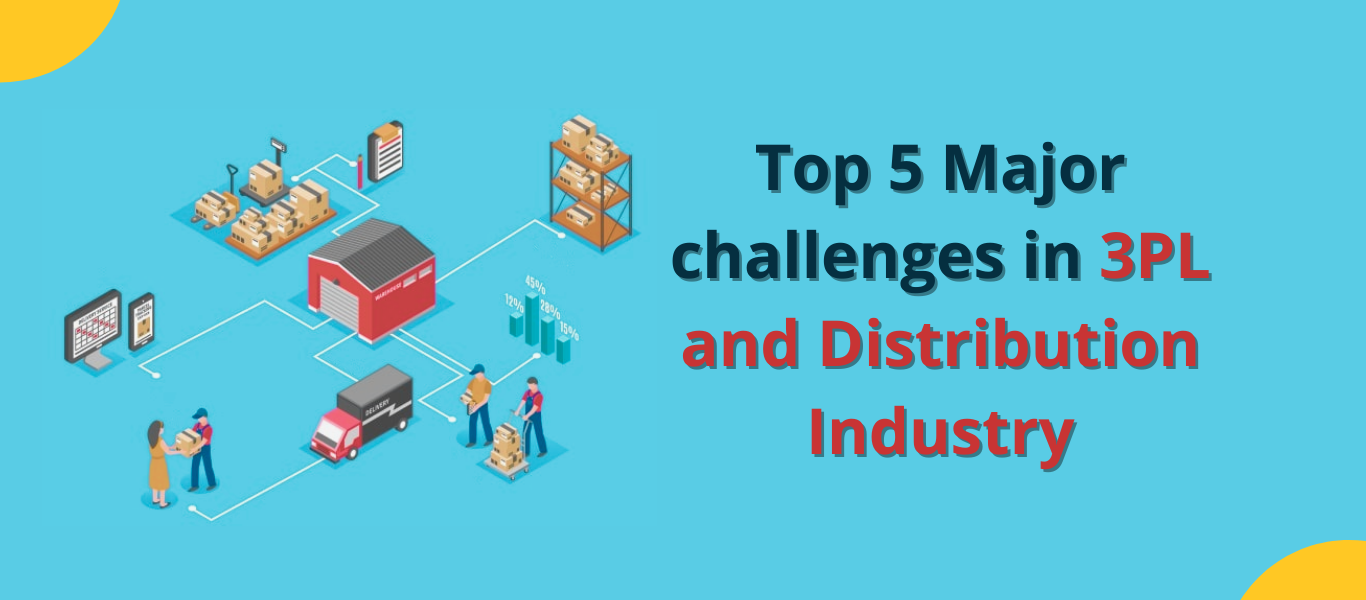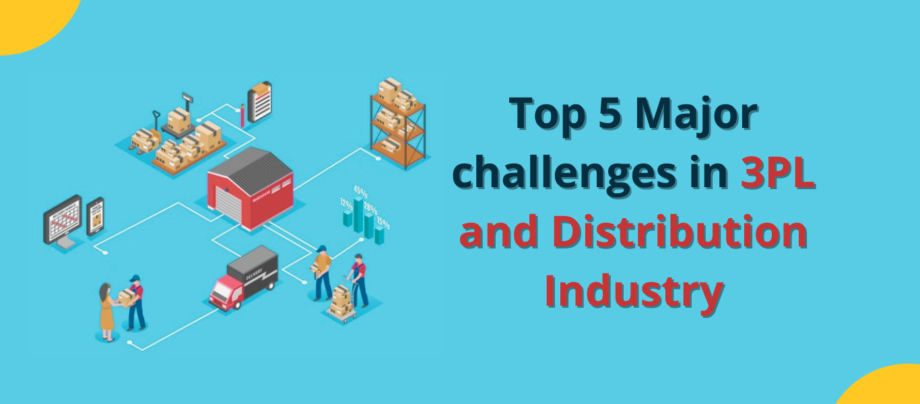Top 5 Major Challenges in 3PL and Distribution Industry

Logistics has always been a very important part of every economy and every business entity. The worldwide trend of globalization has led to many companies outsourcing their logistics functions to third-party logistics (3PL) companies. This helps them to concentrate more on their core competencies and hence generate higher revenues.
With more sellers, the demand for third – party logistics ( 3PL ) warehouses has never been higher. Businesses need third parties that can handle the intricacies of their logistics so they can double down on their core competencies.
To help you navigate the new realities of a booming supply chain, and more specifically 3PL warehouses, we’re highlighting some of the most crucial challenges you’ll need to tackle head-on in 2021 and beyond.
1. Scalability :
Exponential growth without the logistical backbone to support it is a recipe for disaster. This is one of the prime reasons why businesses rely on 3PLs. They want to delegate the logistical headaches to a third party so they can focus exclusively on compounding growth.
All of a sudden, the systems and processes of the 3PL warehouse are going through a rigorous stress test, and many are already snapping. Hence why we believe scalability is going to be one of the biggest challenges for 3PLs moving forward.
2. Seasonality :
Between rent, salaries, and other commitments, the traditional brick-and-mortar stores have to pay a premium regardless of business activity. But eCommerce brands can run without any major financial commitments, allowing them to scale costs back when things are slow. It’s not surprising then to see internet brands thriving in highly seasonal categories.
Unfortunately, this also means that 3PLs are under intense pressure to accommodate these massive shifts from season to season. Running out of space, dealing with untrained seasonal workers, and filling the cracks in processes to accommodate the new peaks—and then scaling everything back to lows once the season runs out—is painfully challenging.
This is especially true for 3PLs that specialize in helping clientele in seasonal categories. Examples include merchants selling winter sports gear, air coolers, and even metal detectors. This ties in with our previous point, as scaling down is just as important as scaling operations up.
3. Shipping :
There’s no denying that the modern consumer wants cheaper and faster shipping. With Amazon constantly pushing the boundaries of the shipping experience, we’re seeing no signs of this trend slowing down anytime soon.
In other words, faster and cheaper shipping is turning from a nice-to-have into a must-have for digital merchants. It can literally make or break their business.
Merchants are naturally turning to 3PL warehouses to fulfill this demand. But with the costs of shipping rising worldwide, not to mention the challenges that come with handling a wide variety of products at scale, many 3PLs are struggling to keep up.
As a result, they’re losing clients to warehousing providers who have developed creative solutions to reduce shipping costs for their customers and have the resources to tackle these challenges.
4. Storage Space :
Traditional warehouses were designed according to the needs and requirements of the time. There’s only so much growth a store in some small town can hope to have in a year. But in the world of online commerce, a single viral campaign can expand the sales of a business by hundreds if not thousands of percentage points. So flexibility is incredibly important for 3PLs as they are exposed to exponential growth on two sides: their own business and that of their customers.
Unfortunately, one of the first side effects of exponential growth is that warehouses run out of space. Failing to offer adequate capacity can put a deep dent into the reputation of any 3PL. Add to that the massive price hikes in real estate across the nation, and you can see why space requirements are going to be a massive challenge this year.
5. Storage Space :
Finding the right talent is never easy. With the sudden growth in logistics, we have more companies fighting for expansion than ever, and as a result, workers have many options to pick from. Amazon, for instance, is expanding its workforce aggressively, both in terms of acquiring talent and offering competitive compensation. Then there’s the fact that acquiring talent is only half the battle. Retaining the ones who are genuinely driven and hardworking is easier said than done.
The result is that hiring, training, and retaining the right people, all while keeping costs at the minimum to keep your pricing competitive, is yet another major challenge 3PL warehouses are facing today.
How does the Logix Platform help you to overcome these challenges ?
At Logix Platform, our mission is to arm 3PL warehouses with sophisticated warehouse management system (WMS) solutions that can level the playing field for them. We have connected solutions to automate nearly every aspect of your warehouse, for, receiving, picking, packing, shipping, and overall warehouse management.
At LogixPlatform, every action we take while fulfilling your order has an automatic, corresponding digital counterpart in our dashboard, which keeps 3PL order fulfillment processes efficient and consistent. Each step is directed by information that is automatically populated in the dashboard when an order is placed. It also comes up with e-commerce and carrier integrations to enhance your business experience.
With Logix Platform, get access to eComGlobus, an advanced eCommerce Fulfillment platform that offers all eCommerce logistics solutions in a single platform to manage your eCommerce/Shopify store very easily.


